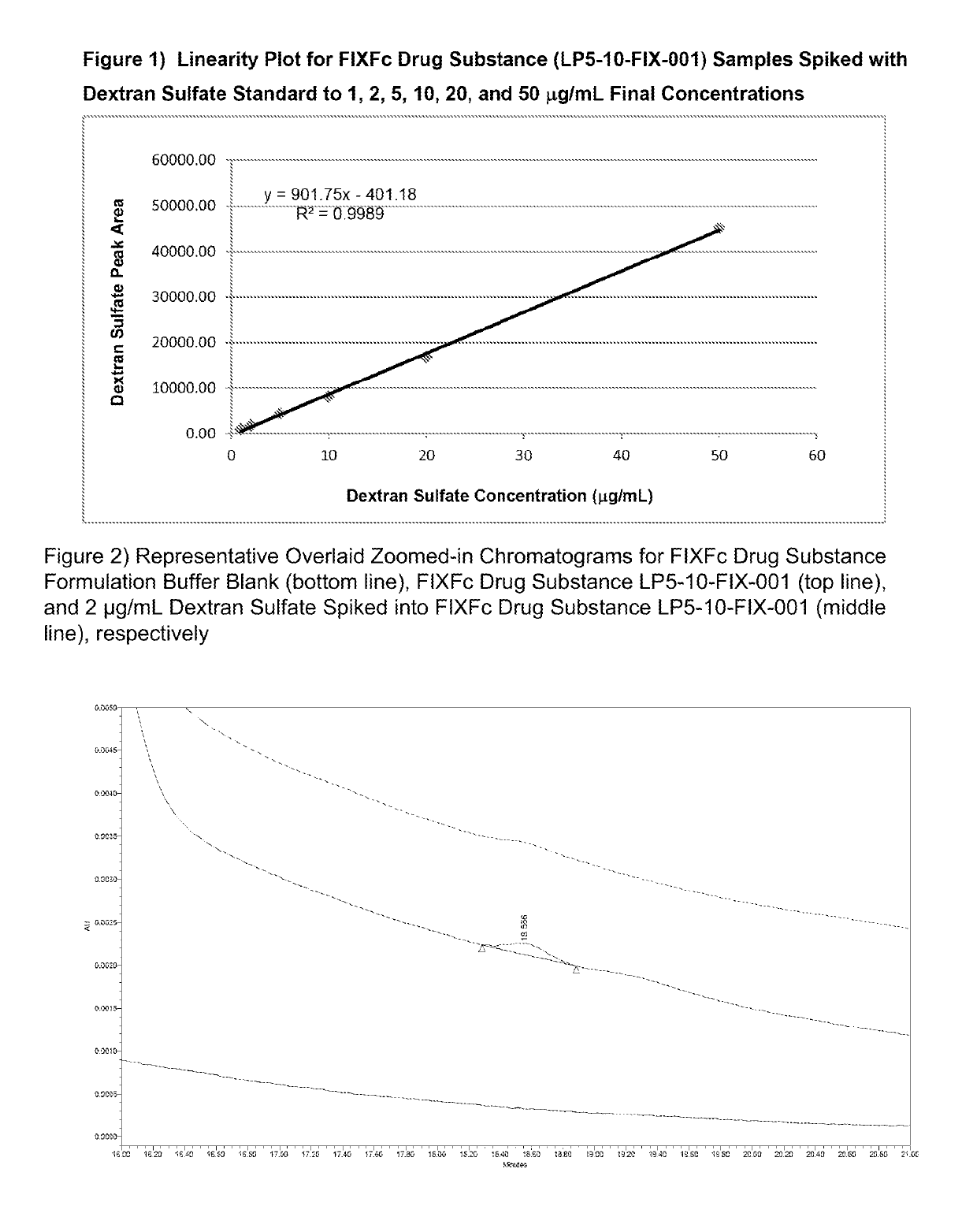Methods of detecting glycosaminoglycans
a glycosaminoglycan and detection method technology, applied in the field of analysis and separation of biological samples, to achieve the effects of reducing the dispersion of glycosaminoglycans
- Summary
- Abstract
- Description
- Claims
- Application Information
AI Technical Summary
Benefits of technology
Problems solved by technology
Method used
Image
Examples
example 1
g Dextran from a Protein Sample
[0069]A partially purified protein manufacturing sample for the manufacturing of Factor IX-Fc is spiked with dextran sulfate (6-8 kDa) resulting in samples ranging from 1 microgram / ml to 50 microgram / ml dextran sulfate.
[0070]An aliquot of the sample is applied to a TSKgel G2000SWx1 column (Tosoh) and eluted with a mobile phase containing 100 mM sodium phosphate, 200 mM sodium chloride at pH 2.5. The eluent is monitored with UV detector (214 nm). The dextran sulfate sample is separated from the protein and elutes later than the proteins.
[0071]The quantitation of dextran sulfate in the test samples is performed using an external standard calibration curve made of dextran sulfate standards. FIG. 1 shows the linearity plot for a Factor IX-Fc sample (LP5-10-FIX-001) spiked with dextran sulfate standards.
[0072]Concentrations of dextran sulfate in a partially purified protein manufacturing sample (Factor IX-Fc) down to 2 microgram / mL can be determined. FIG. 2...
PUM
| Property | Measurement | Unit |
|---|---|---|
| particle size | aaaaa | aaaaa |
| pore size | aaaaa | aaaaa |
| pH | aaaaa | aaaaa |
Abstract
Description
Claims
Application Information
 Login to View More
Login to View More - R&D
- Intellectual Property
- Life Sciences
- Materials
- Tech Scout
- Unparalleled Data Quality
- Higher Quality Content
- 60% Fewer Hallucinations
Browse by: Latest US Patents, China's latest patents, Technical Efficacy Thesaurus, Application Domain, Technology Topic, Popular Technical Reports.
© 2025 PatSnap. All rights reserved.Legal|Privacy policy|Modern Slavery Act Transparency Statement|Sitemap|About US| Contact US: help@patsnap.com

